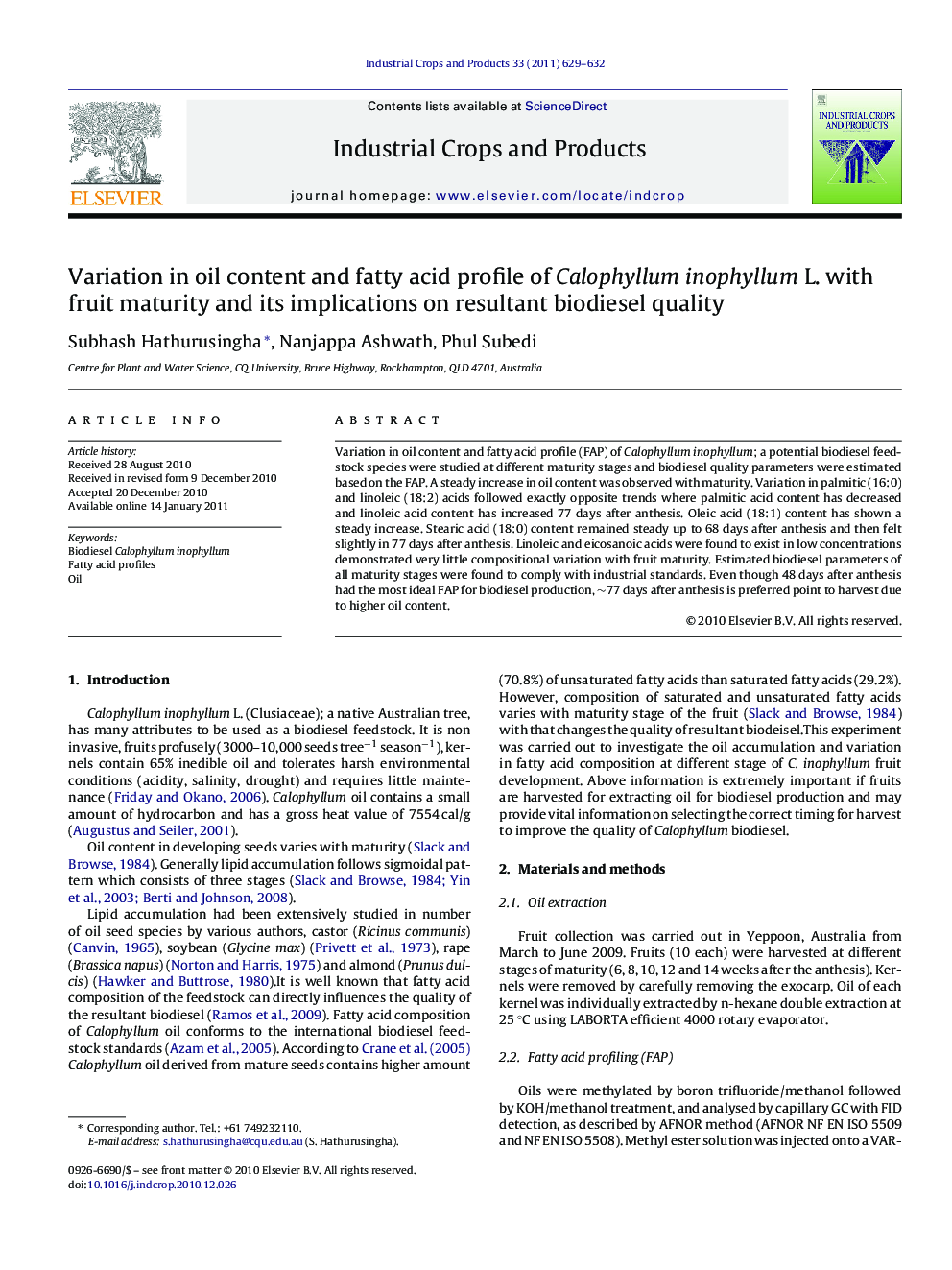| Article ID | Journal | Published Year | Pages | File Type |
|---|---|---|---|---|
| 4514664 | Industrial Crops and Products | 2011 | 4 Pages |
Variation in oil content and fatty acid profile (FAP) of Calophyllum inophyllum; a potential biodiesel feedstock species were studied at different maturity stages and biodiesel quality parameters were estimated based on the FAP. A steady increase in oil content was observed with maturity. Variation in palmitic (16:0) and linoleic (18:2) acids followed exactly opposite trends where palmitic acid content has decreased and linoleic acid content has increased 77 days after anthesis. Oleic acid (18:1) content has shown a steady increase. Stearic acid (18:0) content remained steady up to 68 days after anthesis and then felt slightly in 77 days after anthesis. Linoleic and eicosanoic acids were found to exist in low concentrations demonstrated very little compositional variation with fruit maturity. Estimated biodiesel parameters of all maturity stages were found to comply with industrial standards. Even though 48 days after anthesis had the most ideal FAP for biodiesel production, ∼77 days after anthesis is preferred point to harvest due to higher oil content.
Research highlights▶ Oil content in Calophyllum inophyllum fruits increase steadily with maturity. ▶ During fruit development, total saturated fatty acid content decreases while total unsaturated fatty acid content has increases. ▶ Temperature during fruit development plays an important role in defining fatty acid profiles (FAP). ▶ FAP of all maturity stages are suitable for biodiesel production and 48 days after anthesis has the most suitable FAP.
